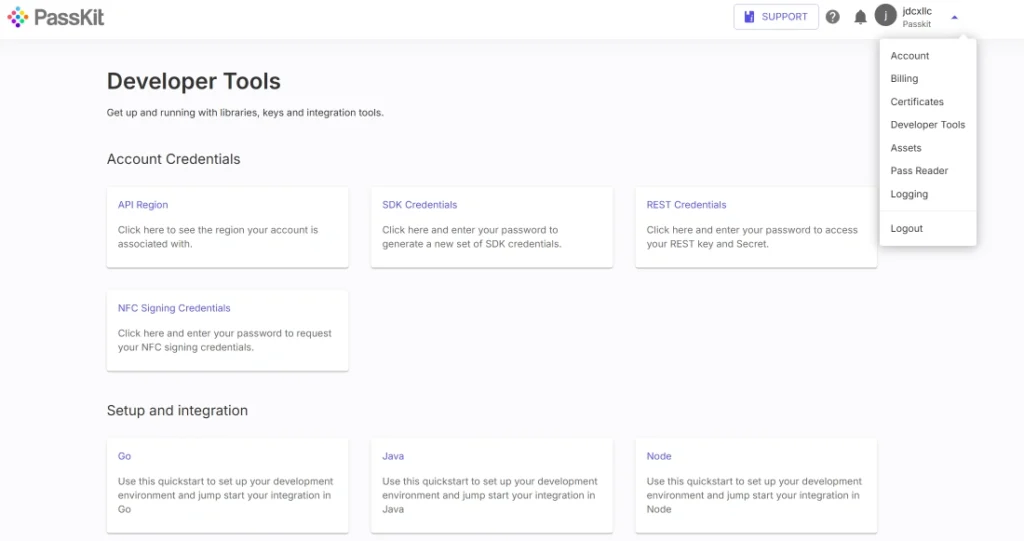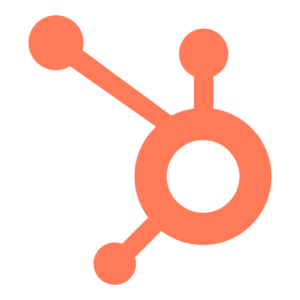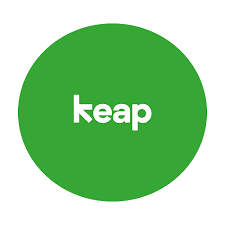By integrating Salesforce with PassKit, you can automate the creation and management of digital passes for Apple and Google Wallet, all in sync with your CRM data. This connection helps you issue loyalty cards, membership passes, coupons, or event tickets based on real-time updates within Salesforce, without manual intervention.
Using PassKit’s APIs and webhooks, which are easily accessible from your account settings, you can build custom automations that respond to Salesforce activity and keep both platforms seamlessly connected.
Setting Up The Integration

Everything you need to configure the integration is available directly inside your PassKit account.
To begin, log into your PassKit dashboard and go to Settings > Developer Tools. Here, you’ll find your API region, SDK host, port, and REST API prefix, essential details for connecting your systems.
Next, set up webhooks by visiting your project’s Settings > Integrations > Webhooks. These allow PassKit to notify your Salesforce instance when key pass events occur, such as when a pass is issued, updated, installed, or deleted.
Once those details are in place, you can use Salesforce tools like Flow Builder or Apex to send API calls to PassKit based on events like lead conversion, contact updates, or campaign actions. Likewise, PassKit will push data back to Salesforce using the webhook URLs you configure.
For detailed walkthroughs, refer to the API and webhook documentation linked in the Support section below.
Common Use Cases
Integrating PassKit with Salesforce allows you to connect real-time CRM activity to your digital pass experience, unlocking smarter automations across your customer lifecycle.
- Issue digital passes automatically when a new lead converts or a contact is added to Salesforce.
- Update pass details such as tier level, points, or membership status based on changes to a record in Salesforce.
- Send targeted communications after a pass is installed, using webhooks to track real-time engagement.
- Revoke or expire passes when a customer unsubscribes, downgrades, or churns.
- Log pass interactions (installs, updates, deletions) back to Salesforce to enrich your customer data.
These automations help reduce manual work, ensure accuracy across platforms, and deliver more personalized customer experiences.
Support And Documentation
Everything you need to get started with the Salesforce integration is available in the PassKit Help Center and Developer Hub.
Here are some useful resources to guide your setup:
SDK and API Configuration Settings
Requirements
To connect Salesforce and PassKit effectively, you’ll need a few basics in place before configuring your workflows.
- An active PassKit account with at least one pass template set up
- A Salesforce account with API or automation tools enabled (e.g. Flows, Apex)
- Access to Developer Tools in your PassKit dashboard (for API credentials and webhook setup)
- A designated webhook endpoint to receive event notifications in real time
- A team member familiar with Salesforce automation or basic API logic
Once everything is connected, you’ll be able to build flexible, scalable workflows between your CRM and mobile wallet passes — all tailored to how your business operates.
Can I Issue A Pass Automatically When A Salesforce Event Occurs?
Yes, you can trigger pass creation using Salesforce automations that send API requests to PassKit.
What Kind Of Data Can Be Synced Between PassKit And Salesforce?
You can sync standard fields like name, email, or tier level, along with any custom fields you’ve set up in your pass template or Salesforce objects.
How Do I Receive Updates From PassKit Back Into Salesforce?
Webhooks allow PassKit to push real-time updates back to your system when passes are created, updated, installed, or removed.
Is This Integration Managed Inside The PassKit Dashboard?
The tools you need, API credentials and webhook settings, are all available in your PassKit account under Developer Tools.
Do I Need A Developer To Complete Setup?
For most setups, someone familiar with Salesforce Flow or API usage can handle it. No deep coding knowledge is required for common use cases. But to ensure a fully working setup, a person with developer knowledge might be the better option.






